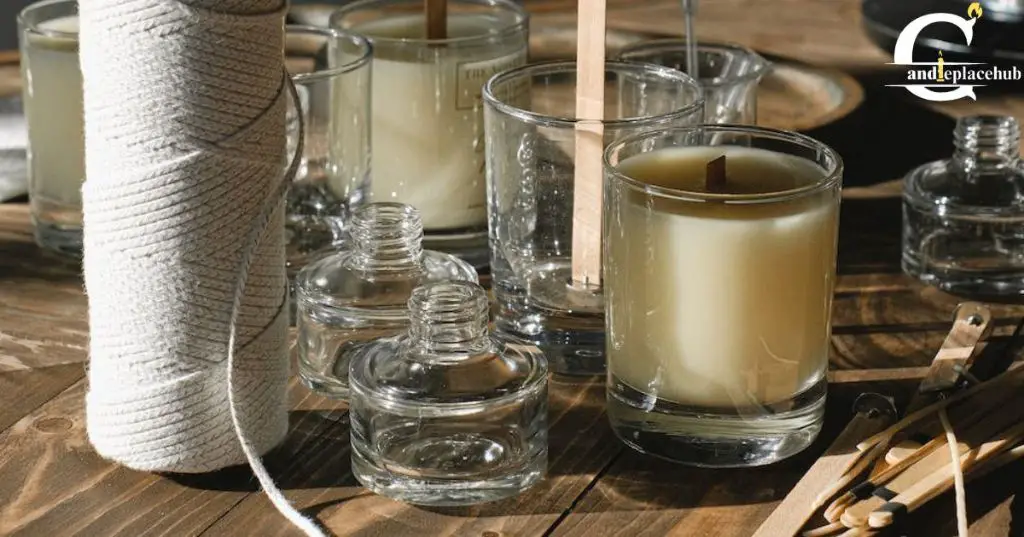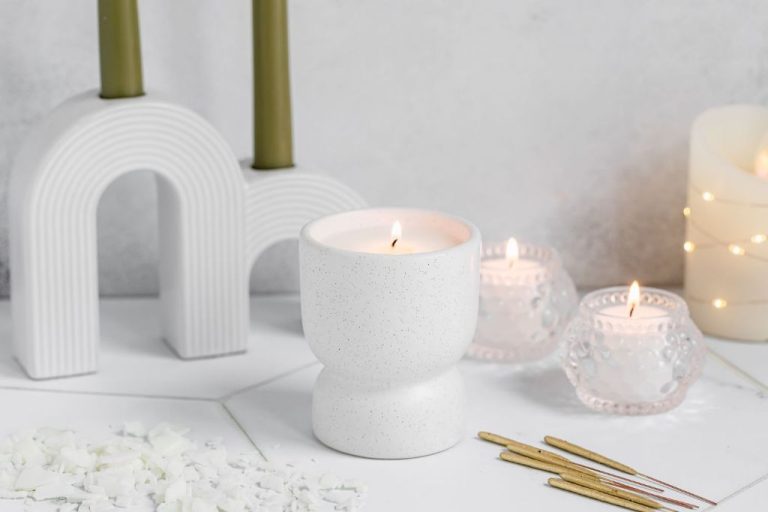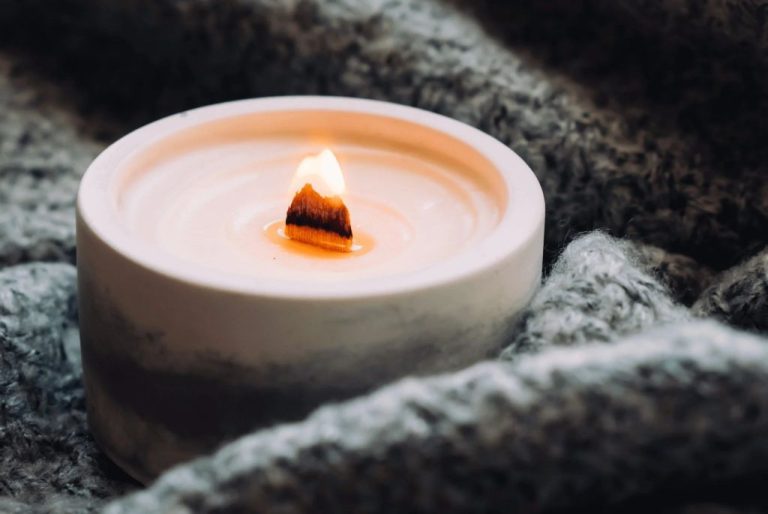How Do You Get Wicks To Stand?
What are wicks?
Wicks are fibrous materials that are commonly used for candles and oil lamps to draw up fuel to the flame. The wick acts as a pathway for the fuel to travel through capillary action. When lit, the fuel combusts at the exposed end of the wick to produce light. Wicks are made from various materials such as cotton, linen, paper, or wood.
Common materials used for wicks include:
- Cotton – A soft, fluffy material from cotton plants that makes an excellent wick material due to its braided structure. Cotton wicks are very common.
- Paper – Paper can be rolled, braided, or twisted to make sturdy wicks. However, paper wicks tend to burn quickly.
- Wood – Soft woods like pine can be cut into thin strips and bundled to create wood wicks. Wood wicks are more rigid.
- Hemp – The fibers from the hemp plant create strong wicks good for oil lamps.
The key purpose of a wick is to deliver fuel to the flame at a controlled rate. If the wick is too thick, it will release too much fuel and create smoke or soot. Wicks also influence the shape and movement of the flame. Stiff wicks that stand upright produce a sharper flame, while more flexible wicks create a softer, rounded flame. Wicks are a critical component of candles, oil lamps and similar devices.
For more details see: What is a Wick in Financial Markets?
Why wicks won’t stand
There are a few common reasons why candle wicks can flop over and not stand up straight:
Certain wick materials like cotton are prone to bending and falling over, especially if the wick is too thin or flimsy. Cotton wicks need to be stiff enough to stand upright when embedded in wax.
Wicks can fall over if they are not properly centered in the candle vessel when the wax is being poured. The wick needs to be anchored in place to maintain an upright position as the wax hardens.
Low melt point waxes like paraffin and soy wax can cause wicks to become uncentered or lean to one side while the candle burns. This is because these soft waxes melt and pool unevenly at the candle’s surface.
Improper wick length relative to the candle diameter can also lead to a wick toppling over. Oversized wicks in small candles or short wicks in wide candles tend to be unstable.
Old or previously burned candles may have wicks that are weighed down by melted wax buildup, preventing them from standing up straight.
Trimming the wick
Proper wick length is crucial for optimal candle burning. Wicks that are too long will produce tall, sooty flames. According to Candle Care 101: How To Trim Candle Wicks the Right Way, wicks should be trimmed to 1⁄4 inch before lighting to prevent this issue. The article recommends trimming your wick at least every 4 hours of burn time for best results.
Trimming your wick is easy. You can use either candle scissors or fingernail clippers. Approach the wick from the top and snip vertically to cut the wick evenly, advises Martha Stewart. Cutting the wick to around 1⁄4 inch is ideal. Trimming will allow the wick to burn slowly and steadily, without excess smoke or soot.
Sources:
https://www.marthastewart.com/8053740/how-when-trim-candle-wick
Using braided wicks
Braided wicks are a popular choice for making wicks stand up straight in candles. Braided wicks are made by twisting together multiple strands of fiber, such as cotton, wood pulp, or paper. This process of braiding the wick creates a structure that is naturally straight and rigid compared to regular string wicks.
There are two main types of braided wicks – cored wicks and flat wicks. Cored braided wicks have a fiber core wrapped in the braided exterior which helps reinforce the wick. Flat braided wicks have a flat profile rather than round which also helps the wick stay upright. Materials commonly used for braiding wicks include cotton, wood pulp, paper, and zinc or paper-zinc mixes (Source).
The inherent rigidity in braided wick makes it naturally stand upright as the candle burns. The braided structure also provides excellent capillary action to draw wax up the wick. Braided wicks are suitable for container candles, pillars, tapers and votives. They are available in a range of sizes to pair with different candle diameters and wax types.
Stiffening the Wick

One of the easiest ways to make wicks stand straight is to stiffen them. This can be done by dipping the wicks in a solution that adds rigidity and structure. Two common solutions used are melted wax and starch water.
Dipping wicks in melted wax is an easy DIY method. Simply melt plain candle wax or beeswax in a small container. Then dip the top half of the wick in the melted wax and allow to fully cool and harden before using in a candle. The wax coating will help the wick maintain its shape and stand upright (Source).
Making a starch solution is another option for stiffening wicks. Boil water in a saucepan and stir in 1-2 tablespoons of cornstarch until dissolved. Allow the solution to cool slightly and then dip wicks in the solution. Let dry completely before using. The starch will add rigidity to the wicks to help them stand (Source).
Securing with a sustainer
A wick sustainer is a small metal tab or clip that helps anchor the wick in place at the bottom of the candle container. Sustainers provide stability for the wick and prevent it from shifting around as the wax shrinks and contracts during cooling.[1]
To insert a sustainer, first prime the wick by dipping it in wax so it becomes stiff. Then, use pliers to clamp a metal sustainer around the bottom of the wick. Position the sustainer close to the tip, leaving just 1-2mm of exposed wick below. This secures the wick to the bottom and sides of the container.
Sustainers keep the wick upright as the candle burns down. Without a sustainer, the wick may lean or fall over as it gets shorter. Sustainers also prevent wicks from pulling out if the candle is moved or carried before the wax fully sets.
Anchoring the Base
One of the most important steps to getting your wick to stand upright is properly anchoring it to the base of the candle. If the wick is not well-secured, it can easily fall over when the wax softens as the candle burns. Here are some tips for anchoring the wick:
Use a wick tab or glue dot to adhere the wick to the bottom of the container before pouring wax. Wick stickers like these from CandleScience https://www.candlescience.com/wick-stickers provide a strong hold.
Secure the wick with a heavy object like a washer, nut, or fishing weight. The weight provides stability and prevents the wick from moving around as the candle sets up. Make sure to use a heat resistant material.
Drizzle a bit of melted wax over the wick end and press it onto the container bottom. Allow the wax to fully cool and harden before pouring the rest of the candle wax.
Use a glue gun to firmly adhere the end of the wick. Hot glue provides excellent holding power. Just make sure to use a high-temp glue gun rated for at least 380°F.
The key is firmly anchoring the wick so it cannot shift or lift up. Proper adhesion at the base is crucial for keeping wicks standing tall from the first burn to the last.
Using a Straight/Rigid Wick
Straight or rigid wicks provide excellent stability and stand up well in candles. Rigid wicks are preferable for container candles, large diameter pillars, and candles with harder waxes like soy, coconut, or beeswax. The stiffness helps the wick stand upright and remain centered as the candle burns down. Rigid wicks are made of materials like wood, bamboo, metal, paper, or a specialized fiber blend designed to resist bending.
Popular rigid curl wick options include wood or bamboo core wicks, zinc or tin core wicks, and stiff braided or twisted fiber wicks like Rigid Curl Wicks. These provide more structure than a standard soft cotton wick while still absorbing wax and burning cleanly. The rigid core helps the wick remain straight and anchored as the wax pool reaches the container edges. Rigid wicks also tend to self-trim well, forming a consistent mushroom top.
Rigid wicks are a great solution if regular soft wicks are bending, tunneling, drowning, or falling over in your candles. They improve the burn performance and help sustain an even wax pool and fragrance throw. Just ensure the wick diameter and wax specifications are matched appropriately.
Pairing with a Sturdy Holder
One of the best ways to enable wicks to stand upright is to pair your candle with a sturdy holder designed to provide stability. The material and design of the candle holder can make a big difference in supporting tall wicks. Metal, glass, and ceramic holders tend to offer more sturdiness and structure than plastic or foil holders. Look for holders with a wide, flat base and choose holders intended for the specific type of candle you’re using, whether that’s a taper, pillar, votive or container candle. Using a holder specifically made for the candle’s shape and dimensions helps keep the wick straight and centered (Source).
You’ll want to avoid holders with small circular rings intended only for the base of the candle. These don’t offer enough structure around the wick. Instead, look for holders that also grip around the sides of the candle. Tall, sturdy candlesticks and lantern-style holders work very well for pillars and large taper candles. Items like hurricane lamps also help block drafts to keep wicks upright. Selecting the proper candle holder provides an easy solution for getting wicks to stand tall in all kinds of candles.
Troubleshooting
One of the most common issues with candle wicks is that they won’t stand up straight or stay centered as the candle burns. This can lead to an uneven burn, tunneling, or the wick getting lost in the wax. Troubleshooting stubborn wick problems typically involves adjusting the wick size, stiffness, or method of anchoring.
If the wick is too large for the diameter of the container, it will melt too quickly and drown in the wax pool. Try using a smaller wick size more suited to the candle’s dimensions. Braided or twisted wicks can also help strengthen a wick. Additionally, make sure the wick is properly tabbed and secured at the bottom with adhesive or sustainers.
For softer wax like soy that won’t hold its shape, opt for a stiffened wick made from paper or wood. This will reduce bending and keep the wick upright. Wicks with zinc or paper cores tend to be more rigid. Securing the wick with extra anchoring sustainer tabs can also improve stiffness.
Sometimes wick issues persist even after adjusting the size and type. This may indicate a need for a different wick altogether. Switching wick materials, such as from cotton to wood, can make a difference. When troubleshooting fails to solve wick problems, consult a candlemaking guide for recommendations on better wick pairings.





